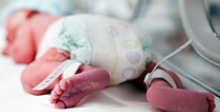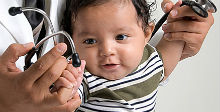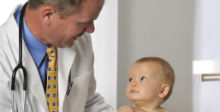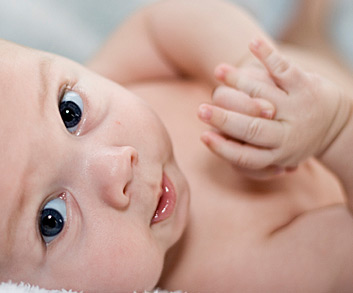Internal mini form
Contact Us Today
When more than one baby is born to a mother during a single delivery, infants have a higher chance of developing Cerebral Palsy than babies from single births. Use of infertility treatments can also cause higher risk.
Why are multiple births and infertility a risk for developing Cerebral Palsy?
Multiple births, or multi-fetal births, is when more than one baby is born to a mother during a single delivery. Multiple births can result in infants with a higher chance of developing Cerebral Palsy than babies from single births. As the number of infants in a multiples birth increases, so does the risk of a child developing Cerebral Palsy. The death of one of the multiples results in an even greater likelihood of Cerebral Palsy.
Pregnancies with multiple fetuses carry a higher risk for complications such as:
- premature rupture of membranes
- umbilical cord accidents in delivery
- abnormal presentation during delivery
- cesarean sections
Multi-fetal pregnancies are also more likely to result in premature delivery. In 2006, 11% of single babies were born premature, while 61% of multiples were born prior to 37 weeks gestation. Premature birth often results in low birth weight newborns. Both are risk factors for Cerebral Palsy, as evident in the table below:
| Average: | Twins | Triplets | Quadruplets |
| Birth Weight | 5.06 lbs. or 2.3 kg |
3.52 lbs. or 1.6 kg |
2.86 lbs. or 1.3 kg |
| Gestational Age at Delivery | 35.3 weeks | 32.2 weeks | 29.9 weeks |
| % Admitted to NICU | 25% | 75% | 100% |
| NICU stay | 18 days | 30 days | 58 days |
| Risk of Cerebral Palsy compared to singletons |
4x | 17x | No data |
Types of Multiple (Multifetal) Pregnancies
Multiple births, when more than one baby is born to a mother during a single delivery, can result in infants with a higher chance of developing Cerebral Palsy than babies from single births. As the number of infants in a multiples birth increases, so does the risk of a child developing Cerebral Palsy. The death of one of the multiples results in an even greater likelihood of Cerebral Palsy.
Pregnancies with multiple fetuses carry a higher risk for complications such as:
| Description | Number of Fetuses |
| Twins | 2 |
| Triplets | 3 |
| Quadruplets | 4 |
| Quintuplets | 5 |
| Sextuplets | 6 |
| Septuplets | 7 |
| Octuplets | 8 |
| Nonuplets | 9 |
| Decaplets | 10 |
| Undecaplets | 11 |
| Duodecaplets | 12 |
| Tredecaplets | 13 |
| Quattrodecaplets | 14 |
| Quindecaplets | 15 |
| Sexdecaplets | 16 |
| Sepdecaplets | 17 |
| Octdecaplets | 18 |
| Nondecaplets | 19 |
Were you or your child at risk – before, during or after your child’s birth?
Cerebral Palsy risk factors are events, substances or circumstances that increase the chances of a child developing Cerebral Palsy. They can be avoidable, or unavoidable. A risk factor does not ensure a child will develop Cerebral Palsy; it means chances are higher than if that risk factor was not present. Likewise, the absence of risk factors does not ensure that a child will not develop Cerebral Palsy. Have you been exposed to the following risk factors?
- Cerebral Palsy Risk Factors
Types of risk factors:
- Asphyxia and oxygen deprivation
- Blood type incompatibility or jaundice
- Complications of birth
- Infection
- Intrauterine growth restrictions
- Multiple births and infertility drugs
- Parental health and habits
- Placenta complications
- Premature birth
- Traumatic brain damage
Risk factors vs. risk factor causal pathways
A risk factor does not ensure a child will develop Cerebral Palsy; it means chances are higher than if that risk factor was not present. Likewise, the absence of risk factors does not ensure that a child will not develop Cerebral Palsy.
- Risk Factors and Risk Factor Causal Pathways
The Cerebral Palsy Risk Factor Checklist
Any exposure to risk factors prior to conception and during pregnancy should be immediately discussed with a doctor in order to treat and minimize risk. The Cerebral Palsy Risk Factor Checklist helps parents determine if they may have been exposed to risk factors for Cerebral Palsy.
- The Cerebral Palsy Risk Factor Checklist









